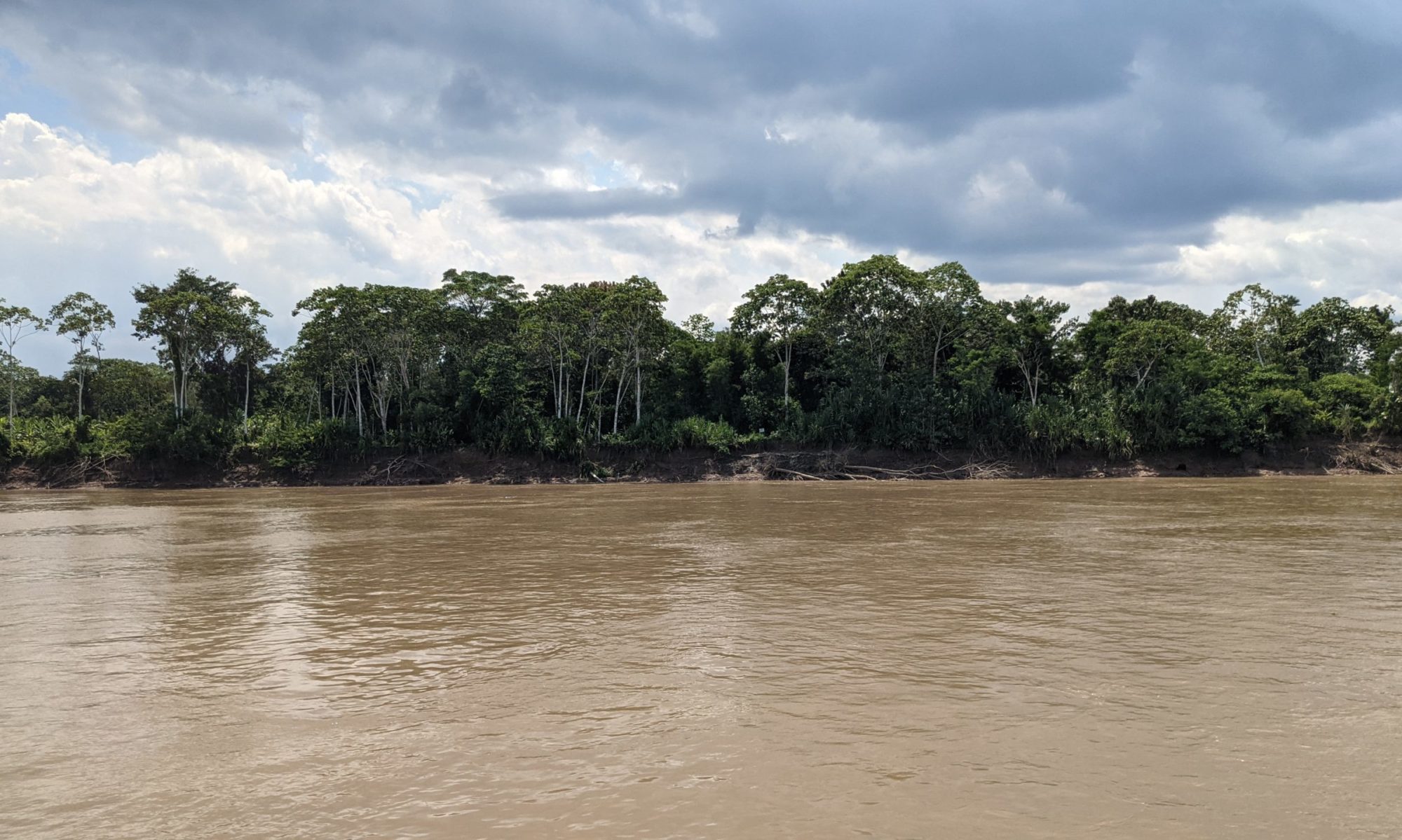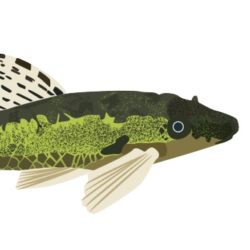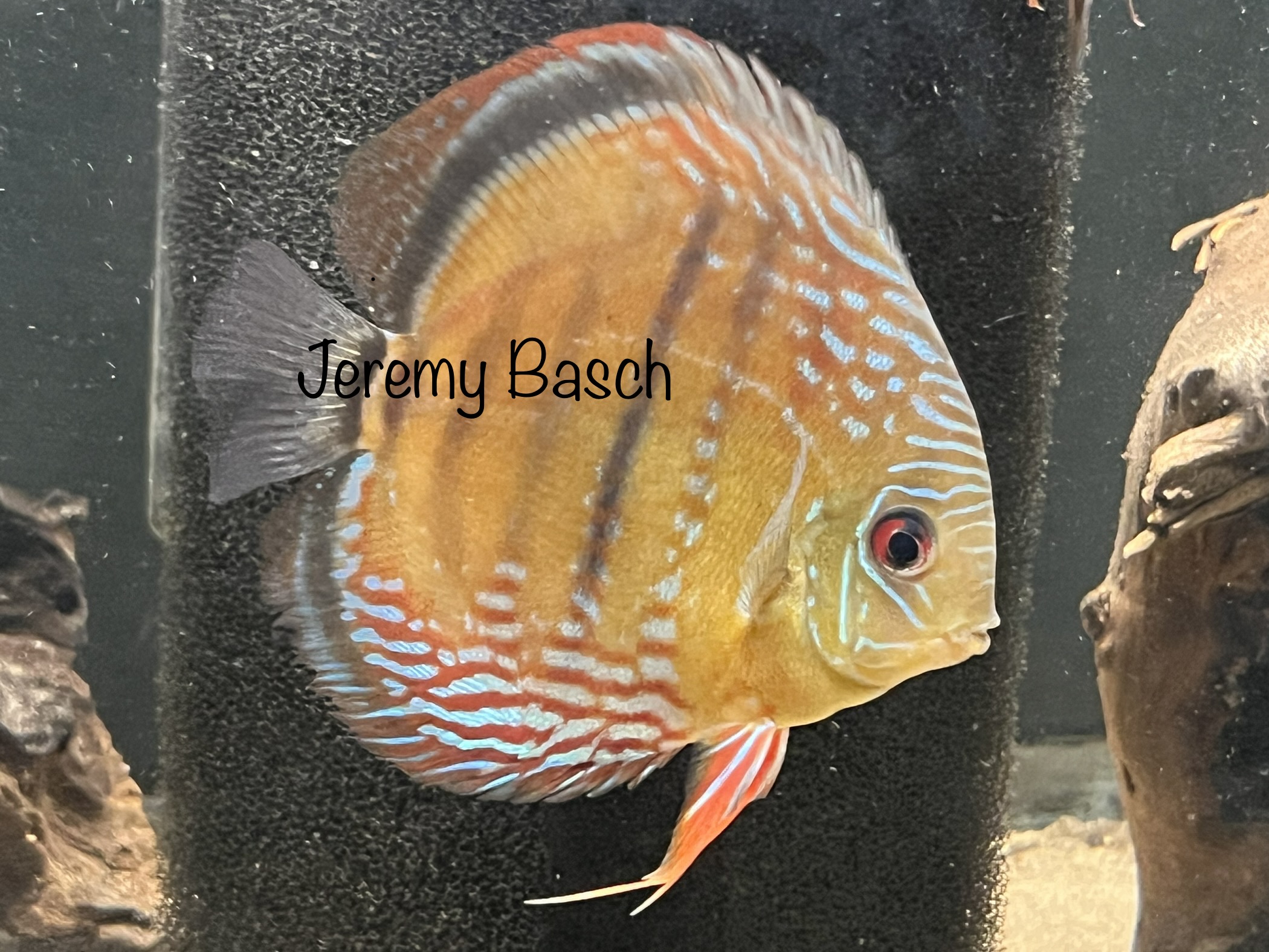
The family of Cichlidae are an interesting group of perch like fish from Central America, South America, Africa and India. They share a common ancestor tracing back to Africa some 40 million years ago. Cichlidae, or cichlid (pronounced “si-kludh”) fish live in a variety of water conditions from rivers and streams to even brackish estuaries and hot springs. They have adapted to various conditions through evolutionary processes. Some species of cichlids have even developed to eat certain forms of food such as Retroculus spp. that fed on midge larvae.
Cichlids might just be the most popular fish for the home aquarium. Their adaptability makes them a prime choice for fish enthusiasts alike. Further, all species found so far exhibit some sort of parental care. The amount of parental care varies by genus and includes species that hang their fry from plants, as in the case of the Guatemala beauty, Rocio spinossioma, to the biparental mouthbrooding care of the South American species of Geophagus. Perhaps even more interesting are some of their cousins in the genera of Uaru and Symphysodon. The latter genus are also known as discus. Both genera of cichlids are known to feed their offspring by secreting a nutrient rich film from their pores. It should be noted that some species of Crenicichla also exhibit similar care.
Originally when we started our fish room, it was primarily set up for Symphysodon species. We kept and even had a pair of Symphysodon breeding in our aquaria. As most aquarists, we eventually started keeping additional cichlid species from the genera of Apistogramma spp. and Geophagus spp. From there we expanded again, this time working with various catfish primarily of the families Loricarridae and Auchenipteridae. However, on a recent trip to Colombia, we could not resist the temptation of reacquiring a group of wild discus. It seems we have come full circle, full circle on discus that is.
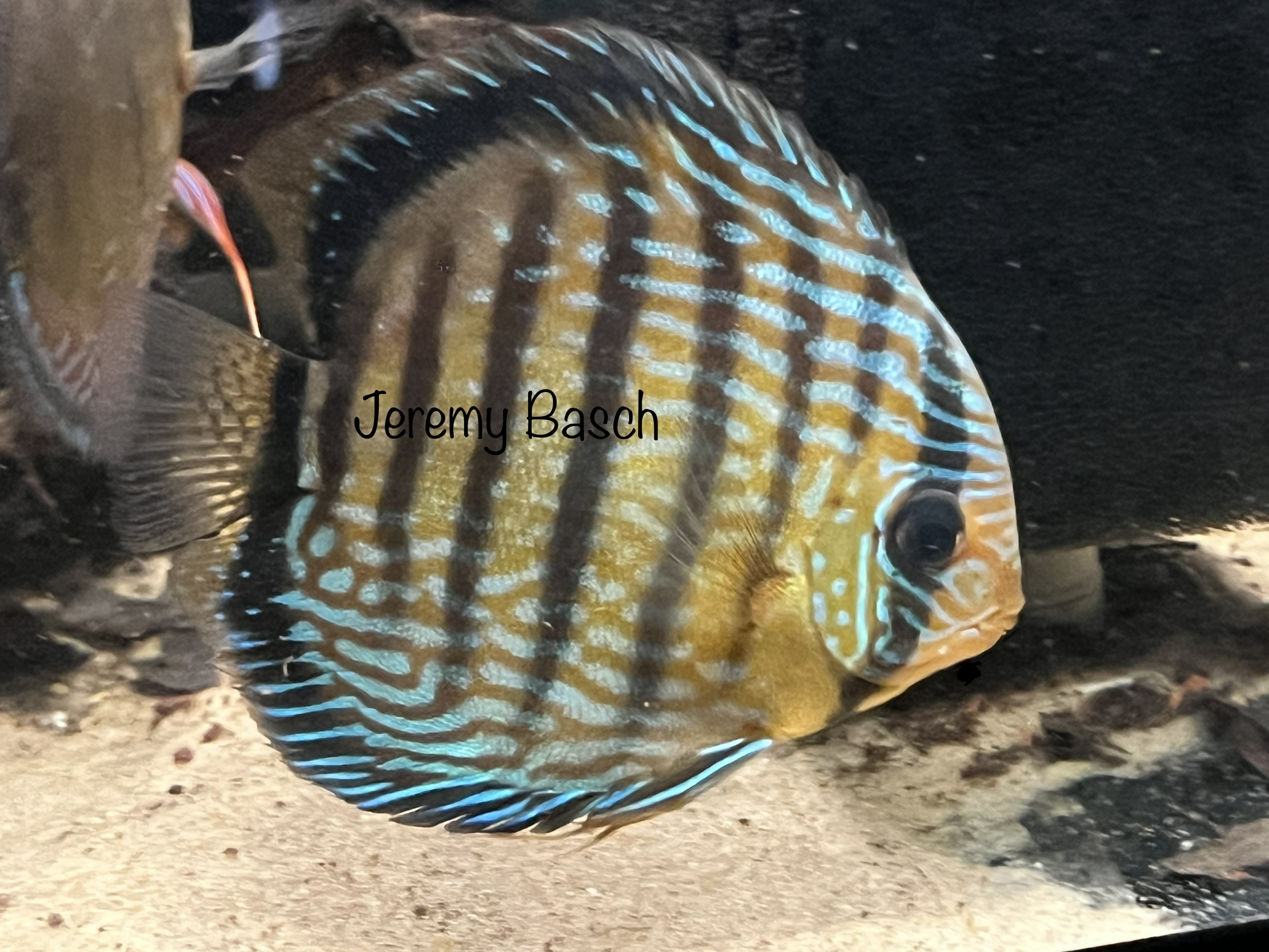
The group of discus we purchased are supposedly from the Rio Negro. Symphysodon discus is typically the only known species from this river. There certainly is doubt if the fish we received are actually from the Rio Negro. Unfortunately we may never know for sure but as you can see by the images that they are beautiful none the less. Reviewing scientific papers on discus, the most recent paper on Symphysodon shares that the genetics indicate that there is some mixing of DNA between the various species (Amado 2011). The paper gives evidence of five species groups of Symphysodon. The five groups include the western group from the Rio Tefe and west, the Rio Negro and Rio Abacaxi group, the Rio Purus group central west Amazon, the Rio Madeira to Rio Tapajos group located central east Amazon and the eastern group located in the Rio Xingu and Rio Tocantins (Amado et al 2011).
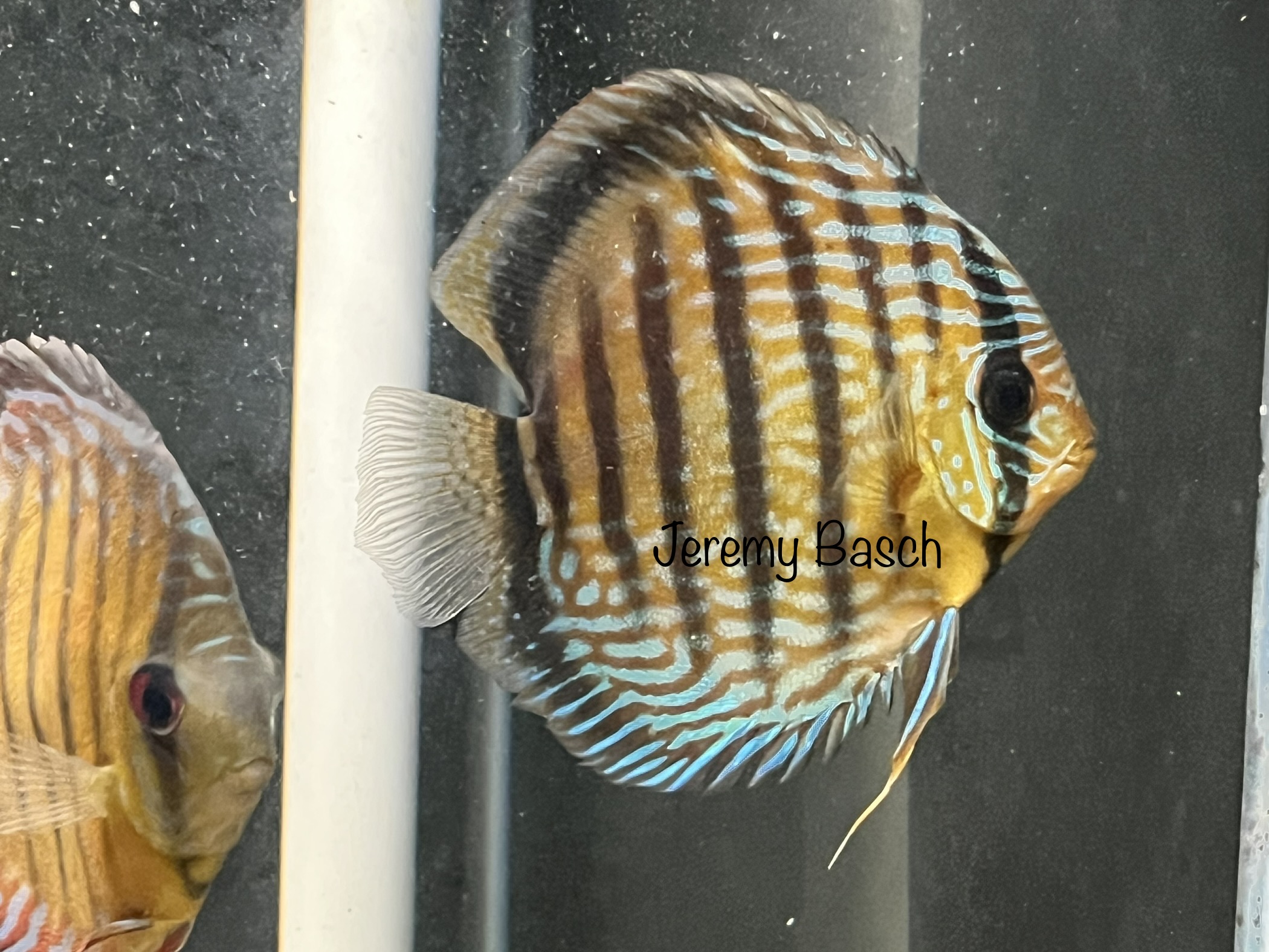
Currently our group of discus are split five and four between two sixty-five gallon aquariums. The tanks are each outfitted with two air lines running a sponge filter. Water for the aquariums consists of half reverse osmosis (RO) water and Columbus, OH tap water. Our water here in Columbus varies depending on the season. In the spring, our tap water can be as low as 120-150 ppm but during the winter, it hovers around 250ppm, pH is consistently 7.2. Water changes are performed twice weekly with roughly 30-40% changed at a time. Tank temperatures are kept between 80-82 F using several Ebo-Jager heaters.
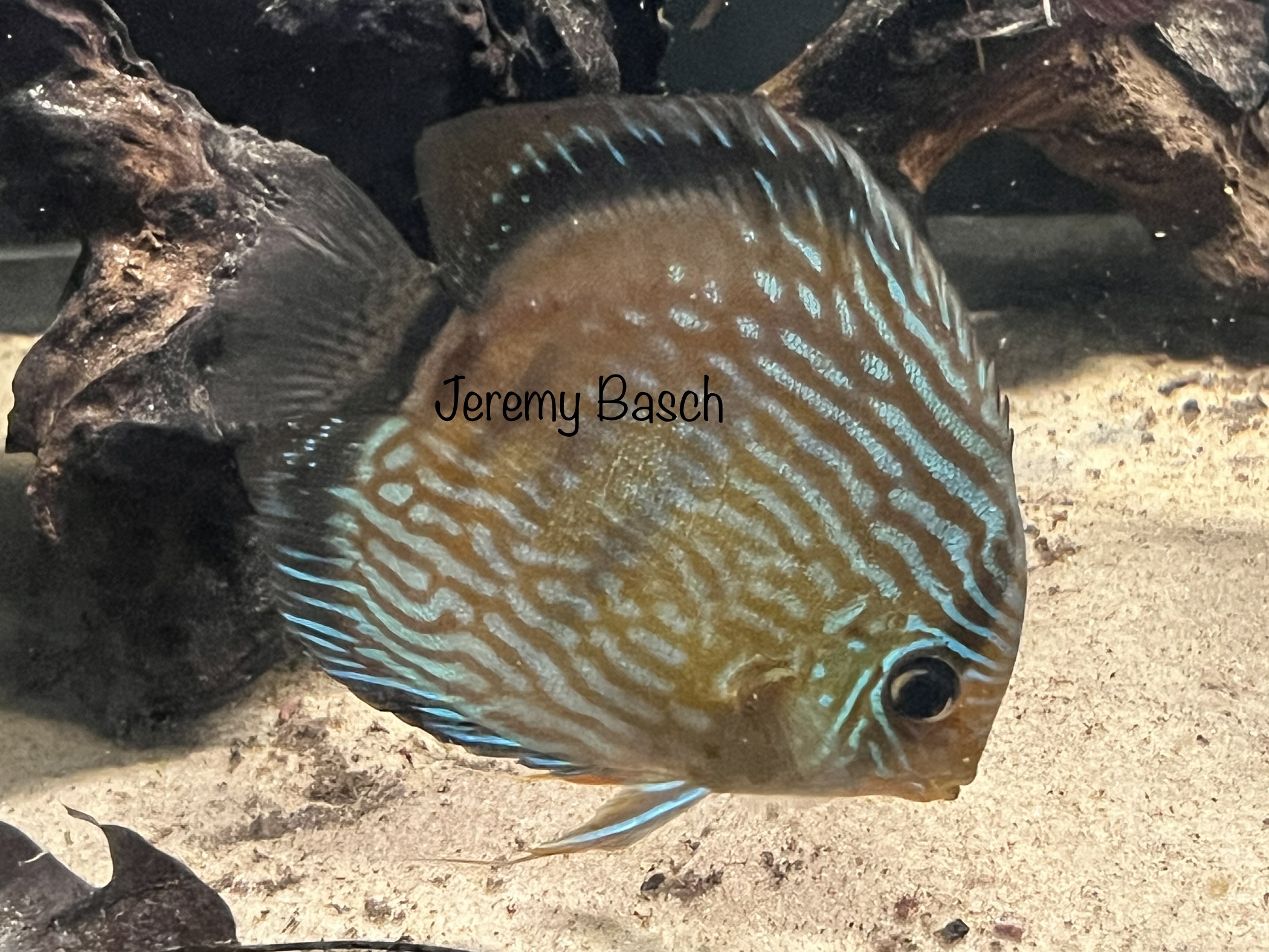
The current diet for our discus consists of high quality foods like frozen bloodworms, bring shrimp, mysis shrimp, Hikari Vibra Bites and New Life Spectrum to name a few. These are fed several times a day to help provide the necessary nutrients needed along with water changes to make the discus grow at a steady pace. Care by the aquarist is taken not to overfeed. The key is to provide give small feedings throughout the day thereby obtaining optimal growth.
Eventually we hope for our Symphysodon to pair off so they can attempt to raise some offspring. We feel that there is a large gap in the market place when it comes to high quality discus and there is nothing better than captive raised fish from wild stock. The goal being to maintain the natural beauty of the fish but to select for natural features. At some point we also plan to have a tank display housing Amazonian fish including some discus.
Additional Images and References:
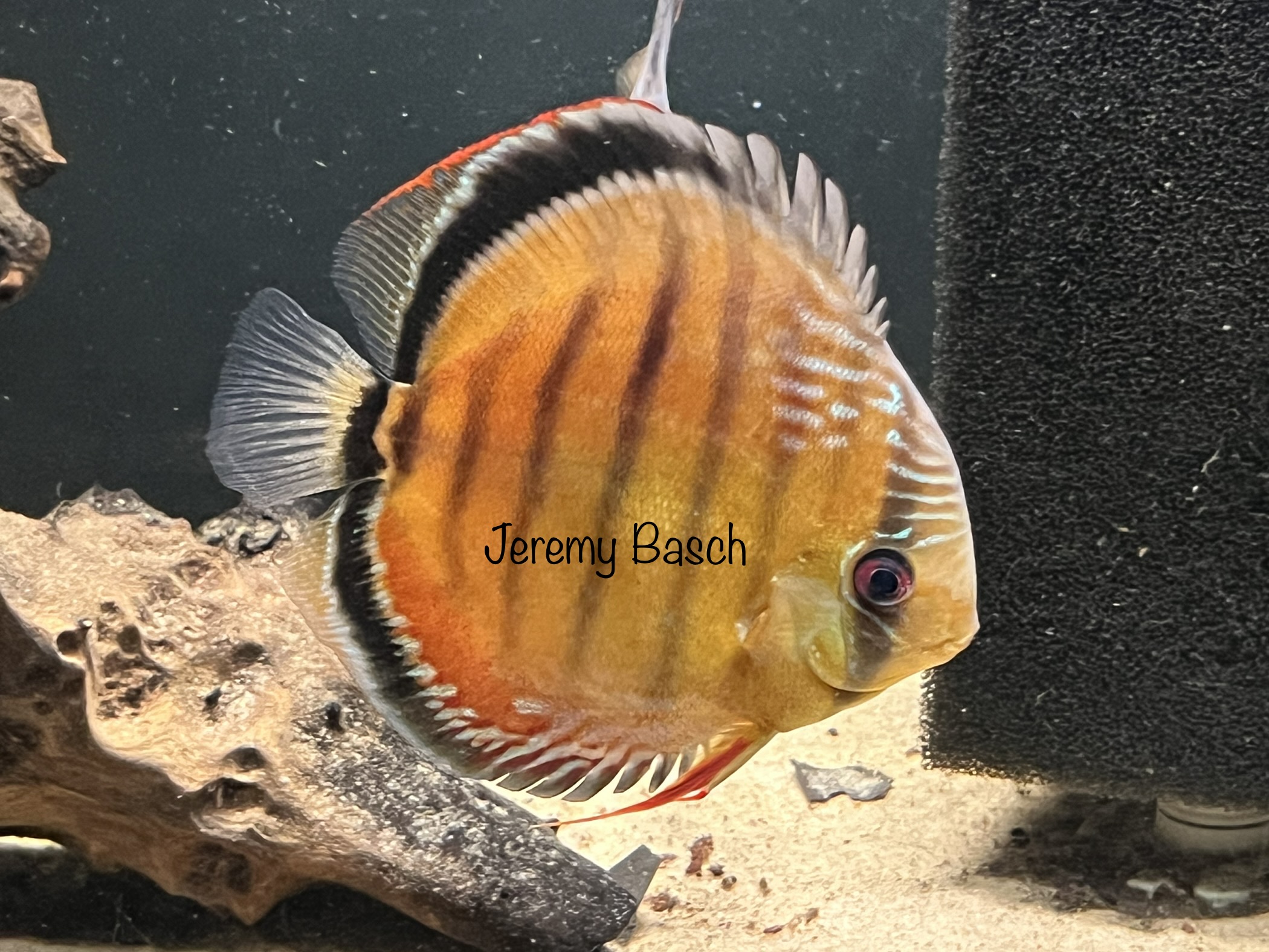
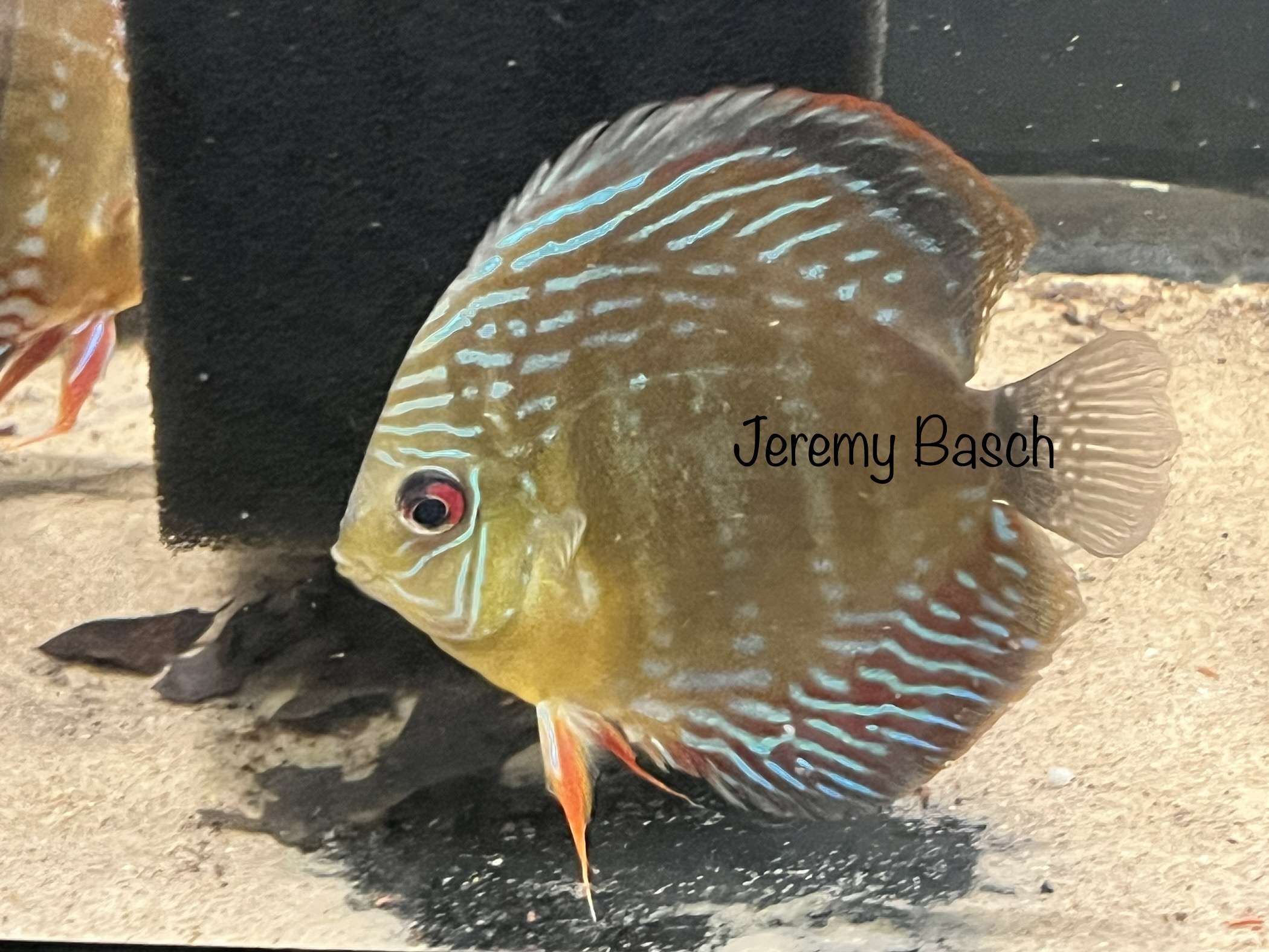
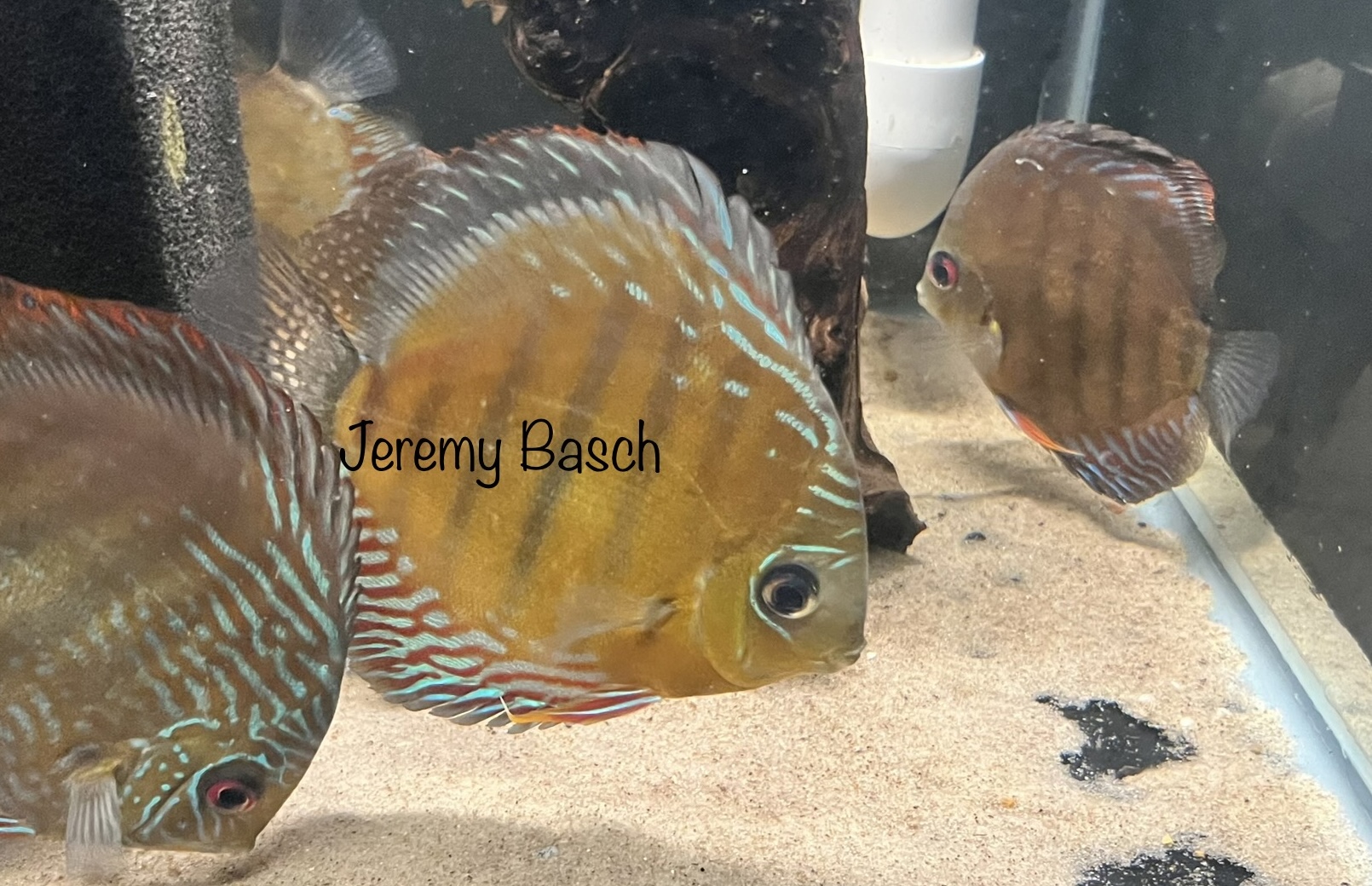
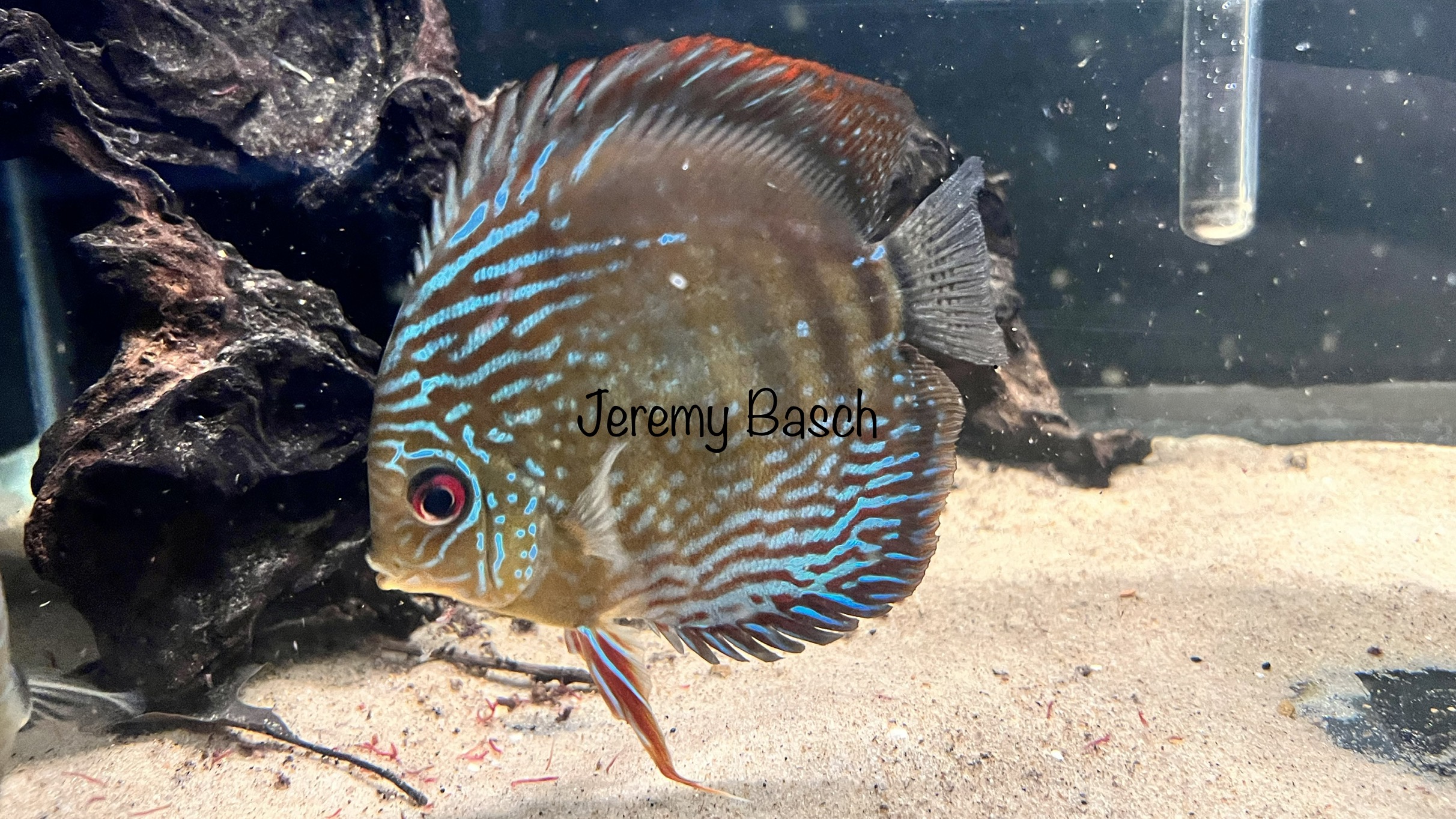

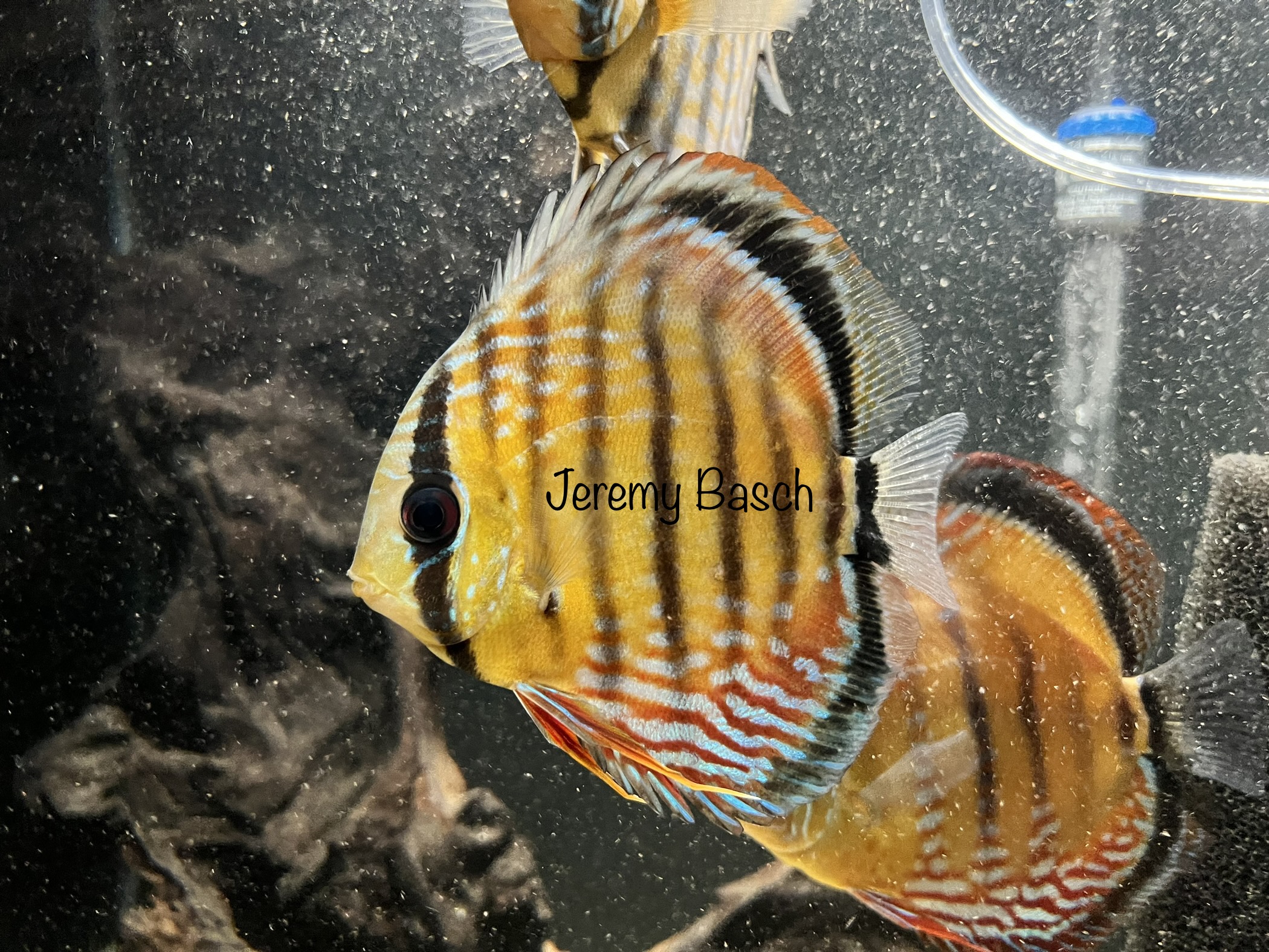
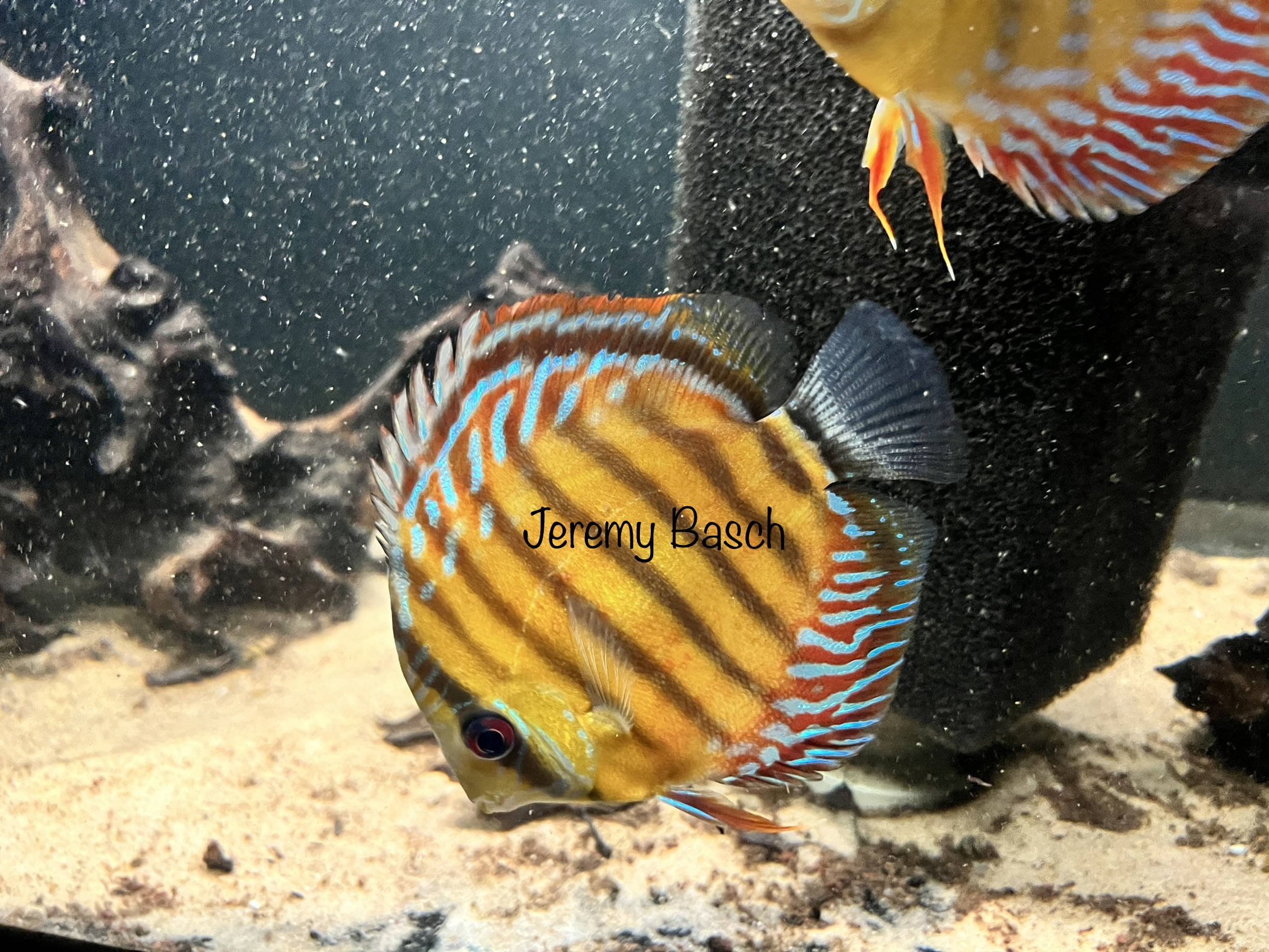
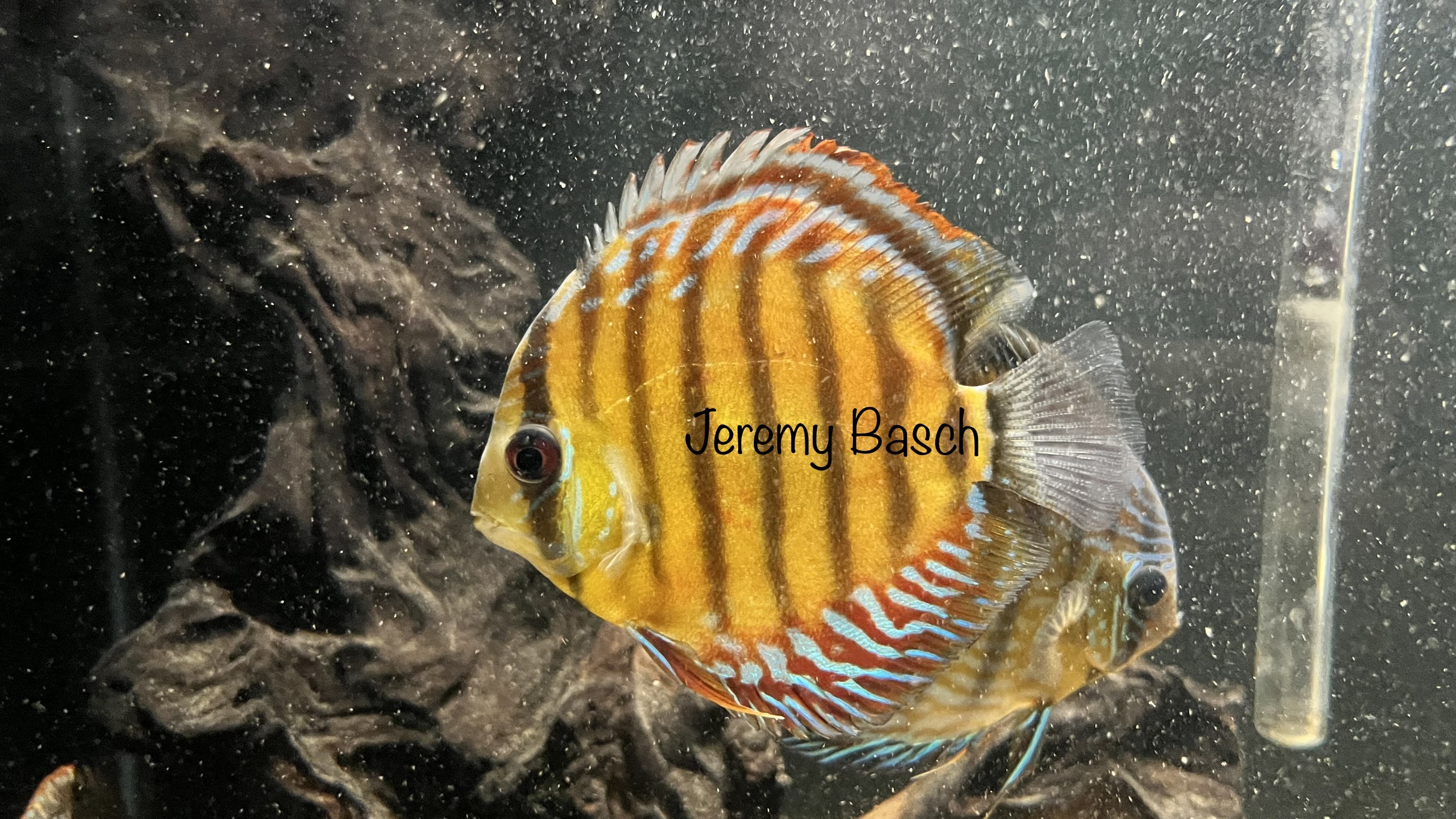
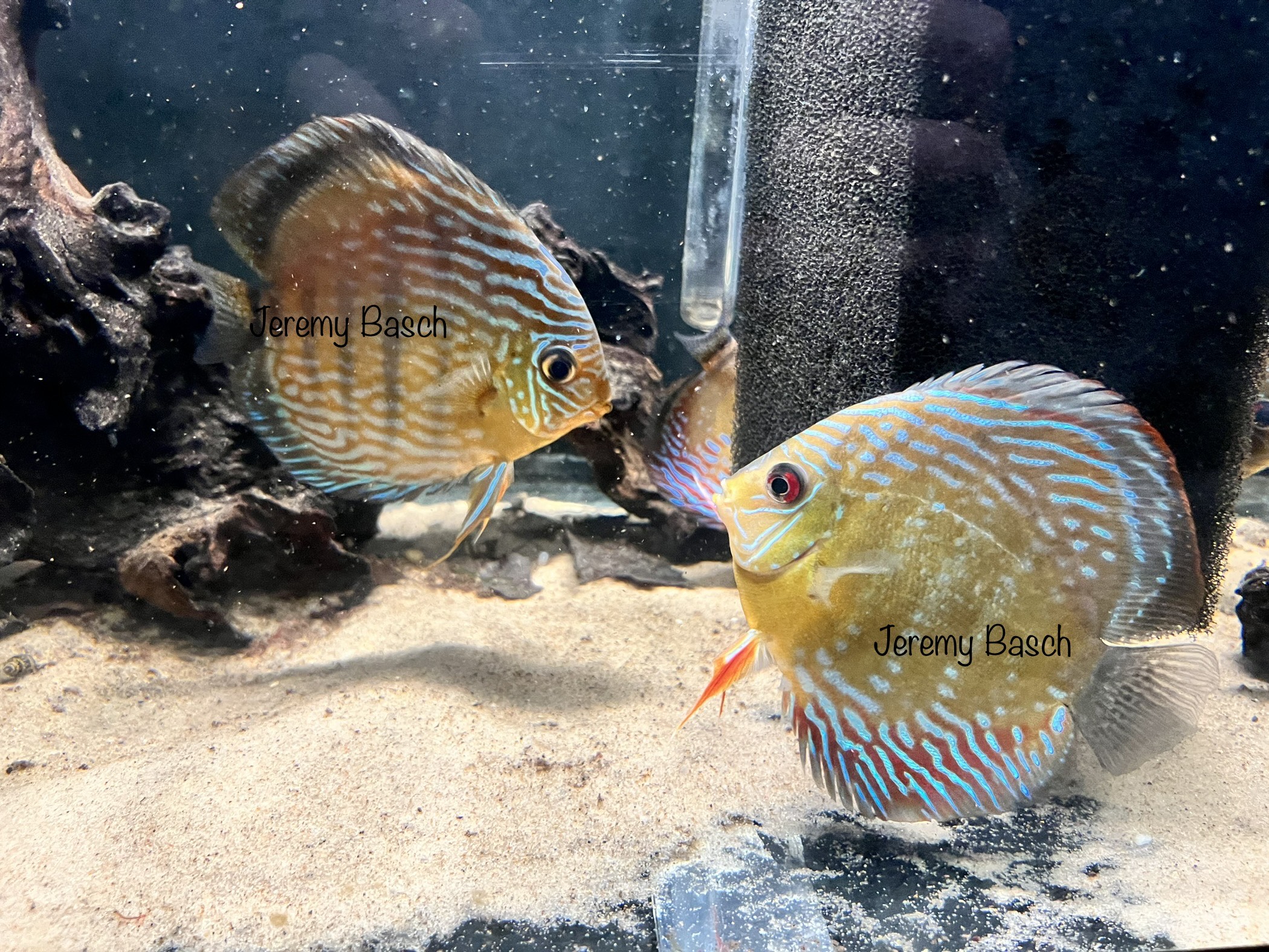
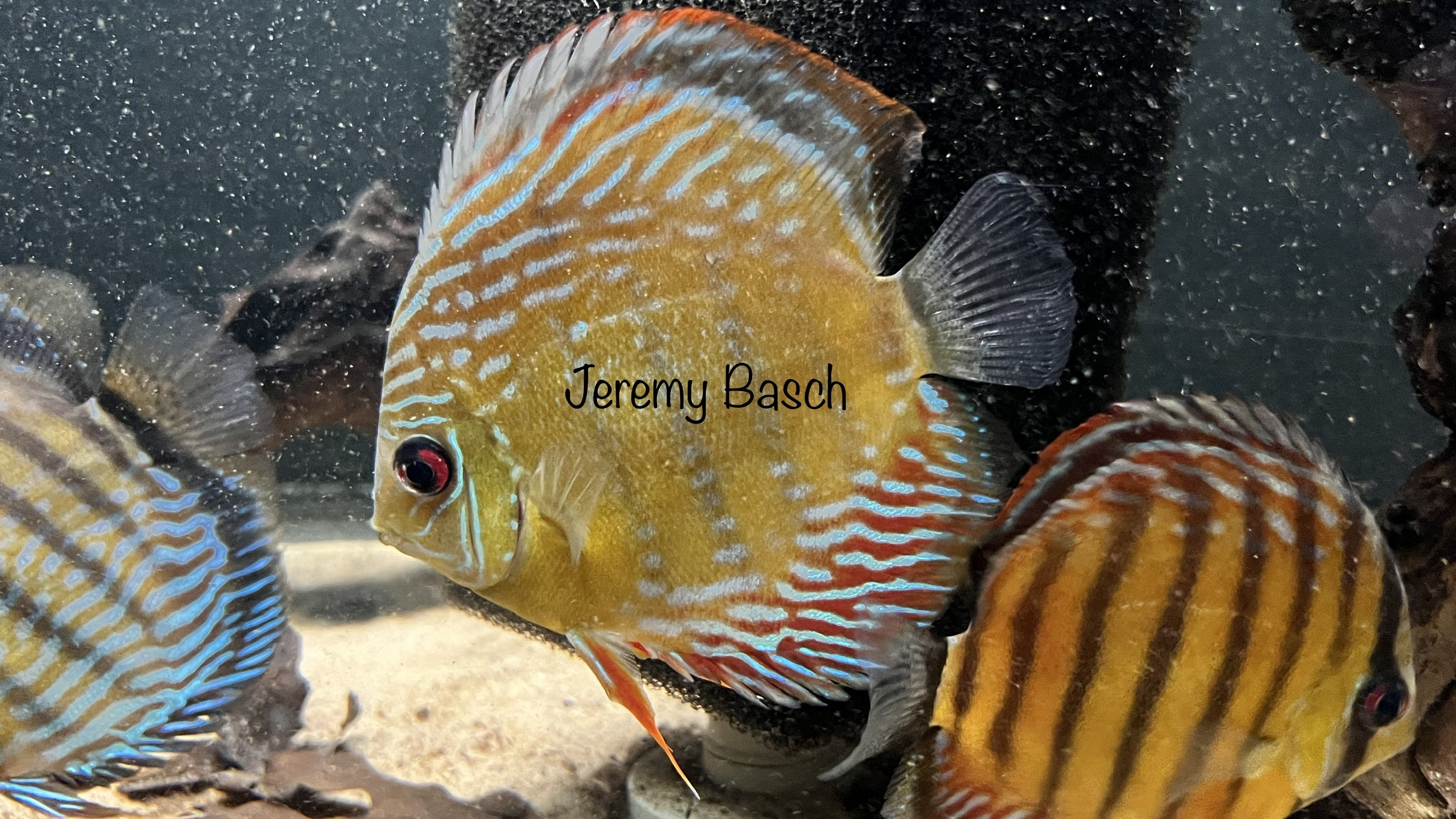
Amado, M. et al. (2011.) A Molecular Perspective on Systematics, Taxonomy and Classification Amazonian Discus Fishes of the Genus Symphysodon. International Journal of Evolutionary Biology, Volume 11, Article ID 360654, 16 pp.
